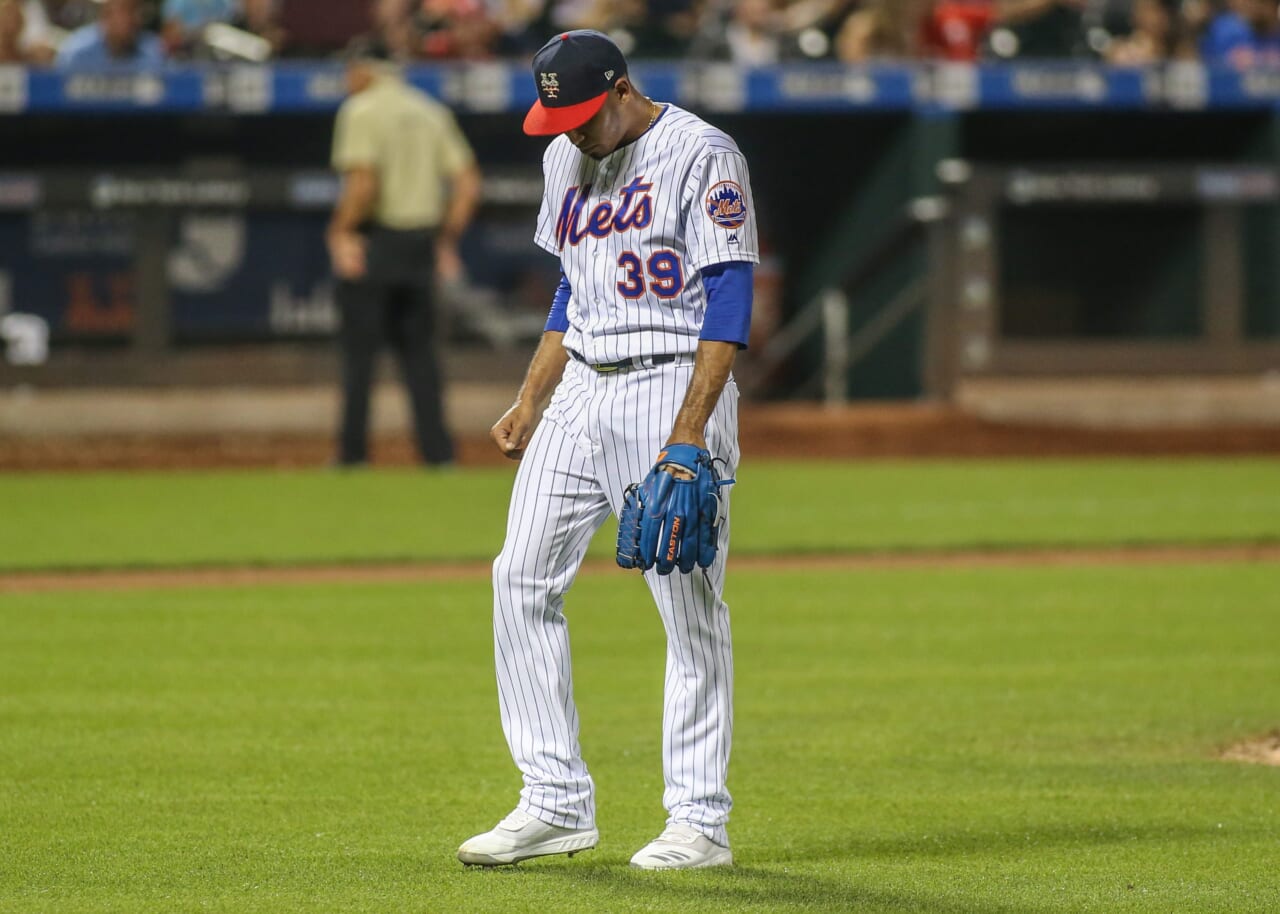Last year, when the New York Mets traded prized prospects Jarred Kelenic, Justin Dunn, and Gerson Bautista along with reliever Anthony Swarzak and slugger Jay Bruce in exchange for second baseman Robinson Cano and highly-regarded relief ace Edwin Diaz, they envisioned the latter as the undisputed closer and a shutdown arm late in games.
That was the idea. However, the first year of the Diaz era didn’t go so well in Queens. After a shiny 1.96 ERA in 2018, he regressed to a 5.59 mark in 2019.
Diaz blew seven saves, easily a career-high. He successfully converted 26 opportunities, but he cost the Mets several games, which ended up being costly.
While it is true that he was inconsistent and, at times, he didn’t seem to be fully focused while on the mound, he will likely be better in 2020.
A not-so-good debut season with the New York Mets
For starters, the 5.59 ERA comes with a 4.51 FIP. It isn’t good by any means, but it is decent. If you add in the fact that he had a 3.07 xFIP, then we are inching closer to Diaz’s true talent level.
While FIP considers the home runs that the pitcher conceded, xFIP takes into account an expected number of homers allowed by a hurler based on the number of fly balls he surrendered and the league’s HR/FB ratio.
Over his career, Diaz’s HR/FB ratio ranged from 10.6 to 14.7. In 2019, the number was an abnormal 26.8. The ball may have played a factor, with the closer’s issues on the mound playing an additional part.
While it is likely that the Mets and former manager Mickey Callaway grew impatient of Diaz at times, he will not surrender 2.33 homers per every nine innings every year. That number is fluky. The team can expect a better statistical profile going forward, but not without work.
After all, Diaz was only in the two percentile in hard contact allowed, with 45.3. It means that he allowed harder contact on average than 98 percent of the league. He needs to improve.
Working for him is that sky-high 39.0 strikeout percentage. He had 15.36 K/9 in 2019, a career-high, which helped him have a .277 xwOBA in contrast to his .344 actual wOBA.
After the season ended, the Mets sent a staff of workers, primarily nutritionists, therapists, and conditioning specialists to Puerto Rico to work with Diaz.
A plan is in place
Jeremy Hefner, the new pitching coach, has already identified helpful information that will help Diaz. According to Anthony DiComo, he has data that can contribute to a turnaround, including release point information, body mechanics, velocity, and slider break.
“We’ve identified some things that will help Edwin moving forward. “[I’m] looking forward to talking to him about those, and working on those things right now, and not even waiting until Spring Training, but engaging him and trying to get him down a good path right away,” Hefner said.
General Manager Brodie Van Wagenen explained that the New York Mets have “put a very specific action plan in place early in the offseason so that we’d have a long runway to be able to see the results.”
It seems like one of the Mets‘ priorities this offseason is getting Edwin Diaz right. If they manage to do it and recover at least 85 percent of the version that accumulated 3.5 fWAR and had a 1.96 ERA in 2018, they will surely make some noise in the National League East.
